Mastering HVAC PPC Campaigns: A Complete Guide Businesses must employ efficient marketing techniques to succeed in the highly competitive HVAC sector. For HVAC businesses trying to raise their profile, draw in new clients, and boost sales, pay-per-click (PPC) advertising has become a potent tool. The complexities of HVAC PPC campaigns will be covered in detail in this article, along with tips on how to comprehend the market, choose target audiences, choose keywords, write effective ad copy, use geo-targeting, run A/B tests, optimize landing pages, and gauge success. A vital industry that is essential to preserving indoor comfort in both residential and commercial settings is HVAC (Heating, Ventilation, and Air Conditioning). The HVAC market is changing quickly due to the rising demand for smart home technologies and energy-efficient solutions. Any company hoping to launch effective PPC campaigns must comprehend the specifics of this sector.
Key Takeaways
- The HVAC industry is highly competitive and constantly evolving, making it crucial for businesses to stay updated on industry trends and best practices.
- The target audience for HVAC PPC campaigns includes homeowners, property managers, and commercial building owners who are in need of HVAC services.
- Choosing the right keywords for HVAC PPC campaigns involves conducting thorough keyword research to identify high-intent and relevant keywords that will drive qualified traffic.
- Crafting compelling ad copy for HVAC PPC campaigns requires a focus on unique selling propositions, clear calls to action, and addressing the pain points of the target audience.
- Utilizing geo-targeting for HVAC PPC campaigns allows businesses to target specific geographic locations where their services are offered, maximizing the relevance of their ads to potential customers.
Installation, upkeep, & repair of heating and cooling systems are just a few of the many services provided by the HVAC sector. Energy-efficient systems that minimize their impact on the environment and lower utility bills are becoming more and more important as consumers grow more environmentally conscious. HVAC companies have a chance to establish themselves as pioneers in environmentally friendly solutions thanks to this change, which can be successfully emphasized in PPC advertising. The foundation of any effective PPC campaign is determining the appropriate target audience.
The target market for HVAC companies can differ greatly depending on a number of variables, including location, demographics, & particular requirements. By being aware of these factors, businesses can effectively customize their advertising campaigns. The first step is to think about breaking up your audience into different groups. When it comes to maintenance contracts, commercial property managers may have different needs than homeowners seeking installation services. Geography also matters a lot; for example, clients in colder climates might value heating services more than those in warmer regions, who might prioritize air conditioning.
HVAC companies can make sure their PPC campaigns are relevant to the right audience by developing thorough customer personas based on these variables. At the core of any PPC campaign are keywords. By carefully choosing your keywords, you can make sure that prospective clients who are actively looking for HVAC services see your ads.
| Metrics | Key Performance Indicators |
|---|---|
| Click-Through Rate (CTR) | Percentage of users who clicked on the HVAC PPC ad |
| Conversion Rate | Percentage of users who completed a desired action after clicking on the ad |
| Cost Per Click (CPC) | Cost incurred each time a user clicks on the ad |
| Quality Score | Rating of the quality and relevance of keywords and PPC campaigns |
| Return on Investment (ROI) | Measurement of the profitability of the HVAC PPC campaigns |
Your campaigns' effectiveness can be greatly increased with a carefully considered keyword strategy. Start by using tools like Google Keyword Planner or SEMrush to perform in-depth keyword research. Make sure your mix of long-tail and broad keywords accurately describes the services you provide. Though "HVAC services" is a general keyword, long-tail variants such as "emergency HVAC repair in [City Name]" can draw in more targeted leads. In order to efficiently target clients in your service area, you should also think about using local keywords.
The next stage is to create attention-grabbing ad copy that encourages clicks after you have determined your target audience and chosen pertinent keywords. While emphasizing the special features of your HVAC services, effective ad copy should be succinct, clear, and convincing.
To potential clients, for example, "Stay Cool This Summer with Our Expert AC Installation!" conveys value right away. Highlight advantages like dependability, energy efficiency, and customer satisfaction in the advertisement's body.
Having a prominent call-to-action (CTA) such as "Get a Free Quote Today!" motivates users to act right away. With PPC advertising, geo-targeting is a potent tool that enables companies to place ads in particular geographic areas. This capability is especially helpful for HVAC companies because it allows them to efficiently reach potential clients within their service areas. In your PPC campaigns, you can make sure that only users in the areas where you offer your services see your ads by configuring geo-targeting parameters. Because fewer clicks are wasted by users outside of your service area, this not only improves the possibility of conversions but also maximizes your advertising budget.
Also, think about mentioning local landmarks or events to create location-specific ad copy that appeals to local audiences. PPC campaign optimization requires the use of A/B testing. Businesses can compare two iterations of an advertisement or landing page to determine which components work best and make data-driven choices to improve their campaigns. Consider important factors like headlines, ad copy, images, & calls to action (CTAs) when conducting A/B testing for HVAC PPC campaigns.
For instance, you could experiment with two distinct headlines: one that highlights rapid service response times & the other that emphasizes cost savings. To find out which version your audience responds to the best, track performance indicators like click-through rates (CTR) and conversion rates. By routinely running A/B tests, you can optimize the efficacy of your campaigns and continuously improve your strategy. For clicks to become leads or sales, a landing page must be optimized. Users ought to be taken to a landing page that meets their expectations and offers pertinent details about your HVAC services when they click on your advertisement.
Make sure landing pages for HVAC PPC campaigns are both aesthetically pleasing and simple to use. To deliver information succinctly, use bullet points and clear headings. To further establish credibility, add trust signals like client endorsements or industry certifications. There should be a clear call to action (CTA) that encourages users to complete the desired action, such as requesting a quote or completing a contact form.
The last phase in running effective HVAC PPC campaigns is tracking and evaluating their results. Businesses can learn a lot about what works & what needs improvement by monitoring important metrics. Return on ad spend (ROAS), cost per acquisition (CPA), conversion rates, and click-through rates (CTR) are important KPIs to track. Track user behavior on your landing pages with tools like Google Analytics to find areas that need improvement.
By routinely evaluating campaign performance, you can make well-informed changes to your approach, such as redistributing funds to more effective advertisements or improving targeting specifications. Finally, a thorough understanding of the HVAC industry, careful audience targeting, strategic keyword selection, effective geo-targeting, compelling ad copy creation, rigorous A/B testing, optimized landing pages, and careful performance measurement are all necessary for mastering HVAC PPC campaigns. HVAC businesses can improve their online visibility, draw in more clients, and eventually spur business expansion by putting these tactics into practice. **Call to Action:** Are you ready to use successful PPC campaigns to grow your HVAC company? Get in touch with us right now for professional advice & customized tactics that will help you reach your marketing objectives!
If you are looking to enhance your HVAC PPC campaigns, you may also want to consider implementing HVAC influencer marketing strategies. Influencers can help increase brand awareness and credibility within the industry, ultimately driving more traffic to your website and generating leads. To learn more about how influencer marketing can benefit your HVAC business, check out this article on HVAC influencer marketing in Ontario, California.
FAQs
What is HVAC PPC?
HVAC PPC stands for Heating, Ventilation, and Air Conditioning Pay-Per-Click. It is a type of online advertising where HVAC businesses pay a fee each time their ad is clicked.
How does HVAC PPC work?
HVAC PPC works by creating targeted ads that appear on search engine results pages when users search for relevant keywords. Businesses bid on these keywords and pay for each click on their ad.
What are the benefits of HVAC PPC campaigns?
HVAC PPC campaigns can help businesses increase their online visibility, drive targeted traffic to their website, and generate leads. They also provide measurable results and allow for precise targeting of potential customers.
What are some best practices for HVAC PPC campaigns?
Some best practices for HVAC PPC campaigns include conducting keyword research, creating compelling ad copy, optimizing landing pages, and monitoring and adjusting campaigns regularly to improve performance.
How can HVAC businesses measure the success of their PPC campaigns?
HVAC businesses can measure the success of their PPC campaigns by tracking metrics such as click-through rate, conversion rate, cost per click, and return on investment. This data can help businesses make informed decisions and optimize their campaigns for better results.






